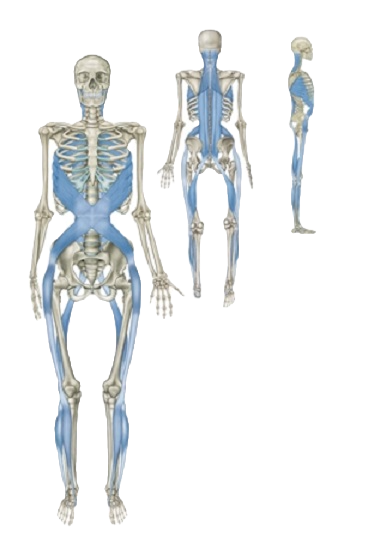07806 895704 painreliefderbyshire@gmail.com
WHAT IS FASCIA ?
Fascia is the seamless web of connective tissue that holds our bodies together. All the different parts of the body are connected by FASCIA in one form or another. Without it, we would be a jumble of bones on the floor.
If we had a magic substance that could dissolve all the bones, muscles, organs, and skin but just left the FASCIA we would still be recognisable as us! This helps explain why damage and restrictions in one part of the body can affect other areas.
Fascia exists in different forms depending on where it is and what it does in the body.
Examples of fascia are ligaments (holding bone to bone) and tendons (connecting muscles to bones) or superficial fascia that keeps our skin connected to the muscle underneath. In fact, the fascia doesn't just surround every muscle, allowing them to slide and glide against each other to produce smooth movement but it also exists WITHIN the muscles, covering every muscle fibre.
Muscle "knots" properly called Trigger Points are the result of damaged or dysfunctional fascia stopping oxygen, nutrients, and necessary chemicals reaching parts of the underlying muscle thus creating tight, painful areas of tenderness that can refer pain to other parts of the body via the fascial web.
Fascia is the tissue that surrounds every organ too....most of the gut is made of fascia for example.

Picture showing one of the fascial tracks, courtesy of Thomas Myers book Anatomy Trains. Tom Myers has mapped the human fascial anatomy. Check out his Fascia 101 video on you tube here (skip the annoying ads)
Thanks to modern imaging and new research that has now confirmed what many therapists surmised a long time ago, we now also know that Fascia acts as a secondary nervous system, communicating messages to other parts of the body at 750mph, many times faster than the central nervous system!




